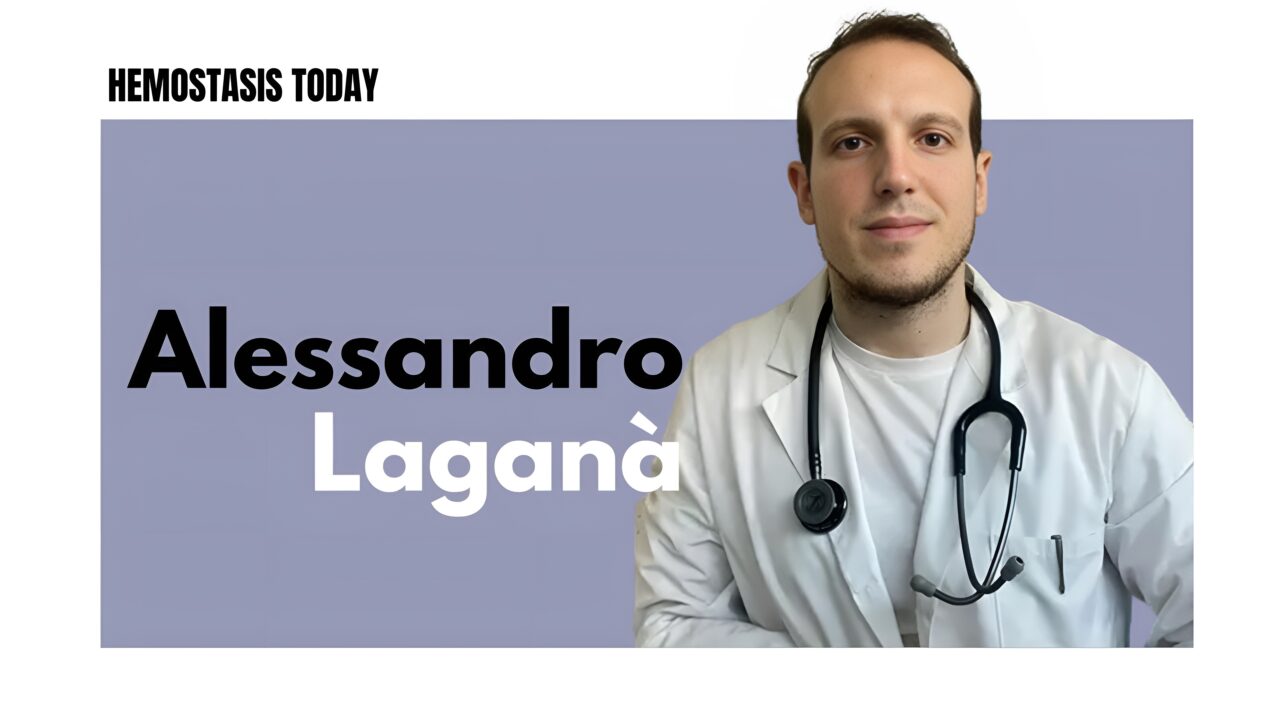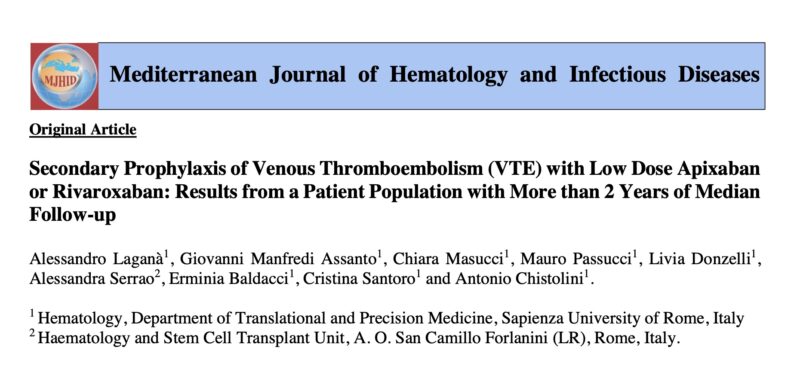
Low-Intensity DOACs in VTE: Sapienza University Reports Long-Term Outcomes
Friends of Mediterranean Journal of Hematology and Infectious Diseases Group shared a post by on LinkedIn:
“Direct oral anticoagulants (DOACs) are widely used for the treatment and secondary prophylaxis of venous thromboembolism (VTE).
Nowadays, DOACs represent the gold standard for long-term anticoagulation, with low-intensity DOAC administration becoming increasingly used worldwide in such scenarios.
Although low-intensity apixaban and rivaroxaban are approved for clinical usage as secondary VTE prophylaxis, there is limited literature regarding their efficacy and safety with a long follow-up.
Here we report the long experience of Sapienza University in Rome.”
Read the full article here.
Article: Secondary Prophylaxis of Venous Thromboembolism (VTE) with low dose Apixaban or Rivaroxaban: Results from a patient population with more than 2 years of median follow-up
Authors: Alessandro Laganà, Giovanni Manfredi Assanto, Chiara Masucci, Mauro Passucci, Livia Donzelli, Alessandra Serrao, Erminia Baldacci, Cristina Santoro, Antonio Chistolini

Stay updated on the latest scientific advances in the field of thrombosis with Hemostasis Today.
-
Nov 19, 2025, 18:03Andres Ricaurte Fajardo on a Strongyloides Stercoralis Hyperinfection with Thrombosis
-
Nov 19, 2025, 17:50Marilena Vrana Reflects on PPTA Europe’s Visits with Members and Stakeholders in 2025
-
Nov 19, 2025, 17:32Michael Makris Shares Insights from Global Forum Meeting of the WFH Meeting in Montreal
-
Nov 19, 2025, 17:14Yazan Abou Ismail Takes The Legacy Award from Qatar Foundation
-
Nov 19, 2025, 17:02Wolfgang Miesbach Shares Real-World Evidence on Eptacog Beta from Spain
-
Nov 19, 2025, 16:34Ishita Singh Reflects on Haematocon 2025: A Reminder of Her Commitment to The Journey
-
Nov 19, 2025, 16:23Mehdi Kashani: I’m Really Excited to Share Schistosite.com
-
Nov 19, 2025, 16:09A ”Meow-cyte” from Melaku Abay Muluneh or Why Microscopy Never Gets Old!
-
Nov 19, 2025, 15:56Cuilan Li on her Contribution to a Cutting-Edge Project in Polycythemia Vera
